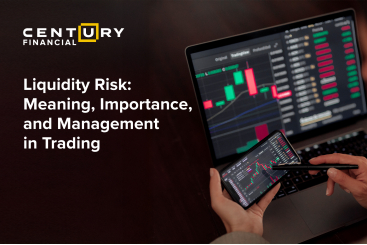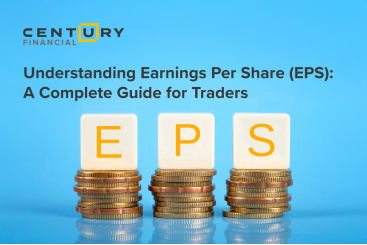
.jpg)
In the complex world of financial markets, the Euro Buxl stands out as an instrument for investors within the European bond market. This long-term bond, typically with a maturity of 25 to 30 years, issued by the German government, is a significant barometer for the broader European economy. The policies and decisions of the European Central Bank (ECB) play a pivotal role in influencing this market, making a deep understanding of these dynamics essential for investors.
To find out how different shifts in interest rates can impact your portfolio, read our detailed report.
The ECB's Role in Shaping the Economy
The ECB acts as the central monetary authority for the eurozone, crafting policies that guide the region's economic health. One of its primary tools is adjusting interest rates. For instance, the ECB has raised rates in response to inflationary pressures, impacting various financial instruments, including Euro Buxl. With rates currently stabilised at 4%, the ECB's policy reflects its ongoing effort to balance controlling inflation and fostering economic growth.
.png)
Analysing the Economic Landscape and ECB's Potential Moves
The eurozone economy is experiencing sluggish growth, with projections suggesting a slowdown. Growth is expected to decelerate to 0.6% in 2023 and slightly improve to 0.8% in 2024. Meanwhile, after reaching a peak, inflation is showing signs of easing. Headline CPI accelerated at a pace of 2.8% in December 2023, slightly above consensus estimates of 2.7%. This marks a substantial improvement from its all-time high of 10.6% in October 2022.
This scenario sets the stage for a potential reduction in interest rates this year. However, there is uncertainty about the timing and extent of rate cuts. Analysts from prominent financial institutions like Barclays and UBS Global Research anticipate rate cuts, possibly starting by April 2024. This anticipated move could create investment opportunities in rate-sensitive instruments such as Euro Buxl.
Euro Buxl and Interest Rate Dynamics
.png)
The relationship between Euro Buxl prices and ECB rate decisions is typically inverse. When the ECB lowers interest rates, bond yields decrease, leading to a rise in Euro Buxl prices and vice versa. This dynamic is crucial for investors to understand as it significantly influences investment decisions. Analysts employ various methods, such as regression analysis and other statistical models, to forecast these price movements, offering insights into future trends.
The Impact of ECB Rate Adjustments on Euro Buxl
The anticipated ECB rate adjustments can significantly impact the performance of Euro Buxl. A decrease in interest rates generally leads to increased bond prices, including Euro Buxl's. Investors looking to capitalise on these movements may consider adjusting their portfolios in anticipation of these changes. However, it's important to note that many factors, including geopolitical events, can influence the bond market, making flexibility and continual reassessment vital.
Strategic Investment Approaches in light of ECB Policies
Considering potential ECB rate cuts, investors might consider strategies that position their portfolios to benefit from an expected rise in Euro Buxl prices due to anticipated decreases in yields. Investors can then position, according to Euro Buxl, to capitalise on the expected rebound in price when the ECB eventually cuts interest rates or uses financial derivatives to hedge against other investments. However, investors need to remain adaptable, keeping an eye on economic indicators and be ready to alter their strategies if the economic context shifts unexpectedly.

For example, any unexpected acceleration in inflationary pressures could influence the ECB’s monetary policy stance and alter the expected interest rate trajectory. Therefore, investors should monitor forthcoming economic reports.
The Global Context and Its Influence
The Euro Buxl, while a significant instrument in the European bond market, does not exist in isolation. Global economic events and policies from other central banks, such as the Federal Reserve in the United States or the Bank of England, can also have an indirect but notable impact.
(Grey Colour) For example, a policy shift in the U.S. can lead to a ripple effect, influencing investor sentiment and behaviour in the Euro Buxl market.
Navigating the ECB's Policy Shifts
As the ECB potentially pivots in its monetary policy, the importance of astute interest rate forecasting becomes more pronounced. Staying informed of economic trends and leveraging expert insights can empower investors to navigate these changes with greater confidence and efficacy.

In conclusion, the Euro Buxl represents a vital component of the European bond market, deeply influenced by the ECB's monetary policies. As the economic landscape evolves, staying abreast of changes and adapting investment strategies will be vital to navigating the complexities of the Euro Buxl and the broader European bond market. Trade now in Century Trader App
The content in this blog, including any research, analysis, opinions, forecasts, or other information (collectively, "Information"), is provided by Century Financial Consultancy LLC (CFC) for marketing, educational, and general informational purposes only. It should not be construed as investment advice, a recommendation, or a solicitation to buy or sell any financial instruments.
This Information may also be published across various channels, including CFC’s website, third-party platforms, newsletters, marketing materials, emails, social media, messaging apps, webinars, and other communications. While CFC strives for accuracy, we do not guarantee the completeness, reliability, or timeliness of any content. Any decisions made based on this Information are at your own risk. CFC accepts no liability for any loss or damage arising from its use.
Trading financial products involves significant risk and may not be suitable for all investors. Please ensure you fully understand the risks and seek independent professional advice if necessary.
Please refer to the full risk disclosure mentioned on our website.









.png)
.png)
.png)
.png)


